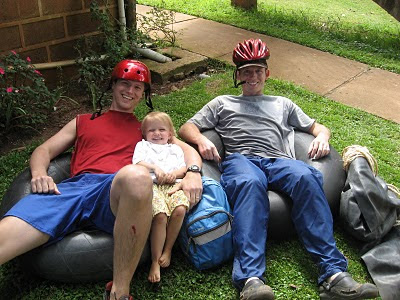Let me introduce you to Mr. Jeram. He developed a transportation empire in the Rift Valley during colonial days using scores of donkeys and oxen. His wealth and generosity became famous, and his place of residence was given the name Kapjeram by the Kenyans.
One of his many sons married the woman above in the blue sari and moved to England where he also became a wealthy businessman. After he died, every year her children would ask what she would like for her birthday, and every year she would say, "I want to return to Kenya and sponsor an eye camp in honor of Jeram for the people he loved." This past week her dream came true.
On Friday, May 28th, two well-dressed Indian businessmen (one being the gentleman in the previous picture with children on his lap - a grandson of Jeram) came to the Eye Unit to meet with me without prior notice. They wanted the Tenwek Eye Unit to staff their UK-based Jeram Foundation's inagural event because of its reputation in the community. Much to my surprise, the event was scheduled for the following Saturday with members of Parliament to be in attendance and 25 descendants of Jeram coming from England, Uganda, Kisumu, Nairobi and Mombasa.
The Eye Unit staff worked hard to make the necessary preparations (medications, tents, PA system, radio advertisements, 100’s of flyers to communities and schools . . . ). On Saturday, we drove our bus and Land Cruiser 50 km into the bush to Kapjeram.
We saw over 600 patients over the next 8 hours (we didn't get started till 10 am because the bus got stuck in the mud for a couple hours until a tractor arrived to pull it out). Within an hour of starting, we began bussing surgical patients back to Tenwek where David Sawe, our ophthalmic clinical officer, started performing cataract surgeries that afternoon and evening.
I took a quick break from screening to give an impromptu speech to the dignitaries, family and guests. Unfortunately, I followed the eloquent Member of Parliament. Among other things, I tried to express how the love God had shown us at Tenwek was the reason we now expressed love for them in our eye work.
Many people had blinding eye conditions such as cataracts and glaucoma. Below are some of the ladies with cataracts waiting for their pre-operative eye measurements back at Tenwek Eye Unit, getting a word of encouragement from one of the hospital chaplains.
By Saturday night, we had 72 patients crammed into 36 beds. After a total of 6 round trips with our bus and Land Cruiser over the next few days, we had completed nearly 90 surgeries! Despite its last minute feel, the eye screening was massive and flawlessly organized by our veteran eye staff, namely Richard Tonui. We then worked several late nights to finish all the surgeries. I am proud to be part of such a team!
Unfortunately, we weren’t able to help everyone. We had three kids like this little girl who was blind from meningitis.
One of the more interesting cases of the day, our CASE OF THE WEEK (COTW), was an 18 year old boy who was crippled and hiding his eye under his hat. Per a relative, he began having eye problems at the age of 3.
On exam, his eyelids were like a "bag of worms." His left eye still saw a bit, and it seemed odd that a tumor 15 years old hadn't completely blinded his eye and killed him by now. We got a little more history and found that his mother also suffered from a similar disease. Up close, he had some interesting nodules on the iris (colored part) of his good eye called Lisch nodules - small glial hamartomas. This clinched the diagnosis of Neurofibromatosis (NF) Type I, part of the Phakomatoses family of diseases.
His eyelid tumor certainly is from a neurofibroma, but an optic nerve glioma may also be growing behind his eye as they are also seen in NF-1. He is likely crippled from neural and bony lesions associated with NF-1. In fact, I was able to get in touch with a hospital that operated on his leg three years ago, and they had removed a neurofibroma from his knee.
For the real dorks in the crowd, I remember that NF-1 is on chromosome 17 because there are 17 letters in NEUROFIBROMATOSIS. NF-2 is on chromosome 22. Easy enough, ehh?
The Phakomatoses are autosomal dominant with the exception of those that have a "W", Sturger-Weber (Encephalotrigeminal Angiomatosis) and Wyburn-Mason (Racemose Hemangiomatosis) as well as Ataxia-Telangiectasia. This means that the patient has a 50% chance of passing his disease to each future child. All of his siblings and mother should also be screened for NF-1 and its associated tumors, which are many. The Jeram Foundation has agreed to sponsor him for a CT scan and then reconstructive surgery at Tenwek. We thank God for sustaining the eye unit through this past week. I pray that the gift of sight many received will enable them to also see the gift of life that God offers to them freely.



















































